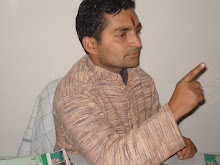Burning Madhesh, Bleeding Madhesis- Govinda Neupane
Burning Madhesh, Bleeding Madhesis
= What happened to Madhesis? Why they are bleeding? Why they are on the streets, particularly on the central and eastern part of Madhesh? Is this a new phenomenon or is it the continuation of something that has its roots in the past? Historically, Madhesh had been suffering from the oppression and suppression as an internal colony of the Khas rulers. The Gorkha Khas kings and their entire Khas brethren treated Madhesh as their private property. By extension, the feudal lords among the MongolKirats and Newars also sided with the Khas ruling clique. Hence, the Madheshis had been suffering for centuries under the brutal rule of the Khas kings.
Many politicians from non-Madhesi nationalities have been busy projecting the present movement called by Madhesi Janadhikar Forum as part of the exercise orchestrated by the regressive forces to create disturbances to block the election of the constituent assembly. There could be infiltration. Therefore, this could be true as a small part of the truth. But, the greater part of the truth is that the movement is for politico-economic equality, social justice and durable peace. Unfortunately, most of the politicians from the mainstream are queuing up to defame the Madhesi movement. Either they don’t understand the social composition, or they are politically blind. They are ready to go any far to quell ‘the destruction and anarchy’. It sounds that even they are ready to travel to the extent of breaking the country into pieces. The new leaders of the regime in Kathmandu have started to behave as new Khas feudal lords and are issuing similar decrees as once the infamous king was busy issuing. This all reveals the prejudiced views of the Khas leaders, Khas-dominated organizations, and their administration in Kathmandu.
The primary thrust of the Madhesi movement is simple to understand. They want to get rid of the past political arrangements based on the principles and practices of internal colonization. Now, they want Madhesi autonomous governance mechanism, federal system and proportional representation including in the election of the constituent assembly. Simply, they are asking for equitable power sharing. The Khas political masters and their so-called civil society brethren argue that these problems should be addressed by the constituent assembly. The simple logic here is that “we will get elected first through the election of non-proportional system based on existing constituencies. Submit your demands to us afterward.” This is one of the most non-inclusive logic. This is nothing other than a ploy to continue the dominance of the Khas masters. Not only for the Madhesis, but also this logic could deny representation for other non-Khas nationalities including MangolKirat (Janajati), Dalit and Newar. Therefore, the Kirats in the east have started their agitation against the Khas arrangements. The other nationalities and regions could follow the paths shown by them.
The king is gone, but the king is breathing. This is the mystery of the Khas arrangement. The election of the constituent assembly will be held to design an inclusive system, but the Khas supremacy will be maintained. This is another mystery of the Khas arrangement. But, after the impact of the mass awakening through out the period of the Maoist movement, the oppressed nationalities have developed critical understanding of the socio-political and economic realities. It is too difficult to deceive them, now.
As a person of Khas origin myself, I argue that the Khas leaders, the parties and organizations dominated by Khas personalities and the Khas administration should start to understand the reality. The days of Khas domination, subjugation and oppression are over. Now, let’s not be the part of problem; let’s not be the party to disintegrate the country and let’s not pretend that we and only we are Nepal. Let’s contribute to build a new multicultural Nepal. The building process is not so complex. Let’s agree to have a federal structure with autonomy to nationalities. Let’s agree to have proportional representation and for this purpose let’s have new demarcation of constituencies based upon the sole criteria of the size of the population. Let’s repent for all the injustices we Khas have committed and our ancestors had committed. Let’s offer our profound apology to all oppressed nationalities – be they Madhesi, Mangolkirat (janajati), Dalit or Newar and begin a healing process so as to build a new Nepal. If we will not accept the power sharing arrangement through the introduction of multiculturalism and federalism now, then the future political as well as social courses may create new arrangements that certainly would finish Khas supremacy through a communal and/or nationalities’ upsurge. In that case, we the most stupid and stubborn Khasas should have to pay a heavy price. According to a Chinese saying “Hundred years ago it was the best time to begin and today is the next best time to start”. Now, let’s start the healing process. Simply but definitely the new rulers in Kathmandu should stop to bleed the Madheshis; the Madhesis certainly would stop to burn Madhesh, their own beloved homeland.
source::http://parivartannepal.blogspot.com/2007/01/


0 Comments:
Post a Comment
<< Home